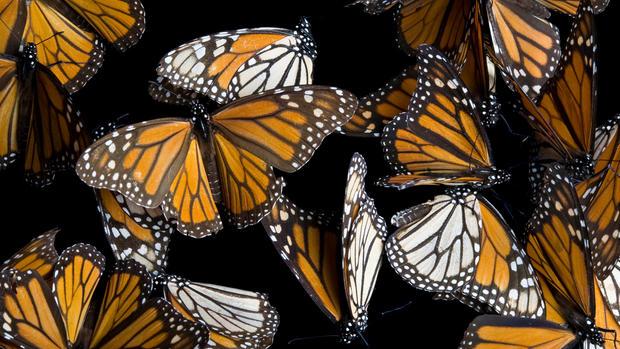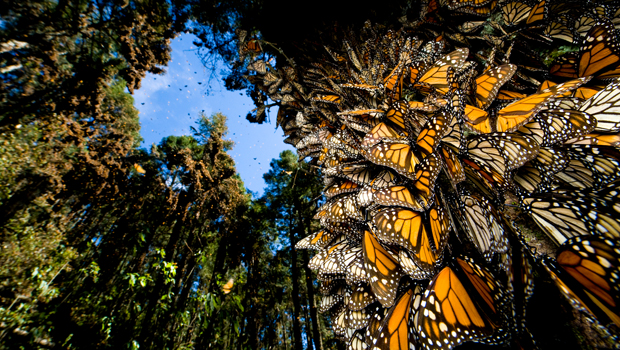Planting a future for monarch butterflies
A modest campaign to preserve a colorful but fragile creature is taking flight -- right in photographer Joel Sartore's back yard:
I have a confession to make.
A few years ago, on a farm I own in eastern Nebraska, I took 44 acres out of production, on purpose.
That's a lot. Where corn and beans once grew, I planted tall, native grasses and wildflowers. Among area farmers, this was seen as nothing short of scandalous.
Though the new plantings helped stabilize the soil in steep areas the previous owners should have never have plowed in the first place, I took some heat for my little "prairie patches."
"Must be nice to be able to leave money on the ground like that," one farmer told me. "What a WASTE."
If only he knew what I really had in mind ... butterflies!
You see, a few years ago I'd had a near-religious experience on a mountaintop in central Mexico. I'd arrived before dawn, on a rented mule. There, standing silently in the mist, were ancient fir trees so laden with Monarch butterflies their bows literally bent under the weight. Can you even imagine how many butterflies it takes to make a tree branch sag?
When the sun finally came up, millions of brilliant orange spots burst from the trees, rising and falling and swirling around me like a great living blizzard.
And for a few moments at least, I felt like I was five years old, and in heaven.
But now we're told this wonder of the world may be coming to an end. How could this possibly happen?
- Saving the monarch butterfly (CBS News, 02/09/15)
- Monarch butterfly could get endangered species protection (CBS News, 12/31/14)
- Monarch butterflies drop, migration may disappear (01/29/14)
It's not terribly hard to figure out, actually. Monarchs only spend the winter in Mexico; then in March, they begin their yearly migration northward. They glide right up the center of our continent, where they need plenty of nectar-bearing plants to feed on, and especially milkweed to lay their eggs.
With more acreage than ever planted to crops they can't eat, plus insecticide sprayed with abandon, it's no wonder the Monarchs have been flying steadily downhill.
But of course there is hope.
Come springtime, we can all embrace native plants. Think how lovely your home, office, school or garden would look with purple coneflower and asters, vervain and black-eyed Susans. And above all, think milkweed. That's the one plant that Monarch babies just can't live without.
Find a nursery that sells the native plants that grow where you live, and get a variety of species that take turns blooming from April all the way through October.
And if we don't manage to save the one insect we so adore? Now THAT will truly be the biggest waste of all.
For more info:
- joelsartore.com
- Follow @JoelSartore on Twitter and Facebook
- https://www.facebook.com/sartorephotoMonarch Watch
- http://www.monarchwatch.org/Instructions on growing your own milkweed (Monarch Watch)
- The Plight of Monarch Butterflies (Environmental Defense Fund)
- Monarch Butterfly (National Wildlife Federation)
- Monarch Butterflies Fact Sheet (Defenders of Wildlife)






